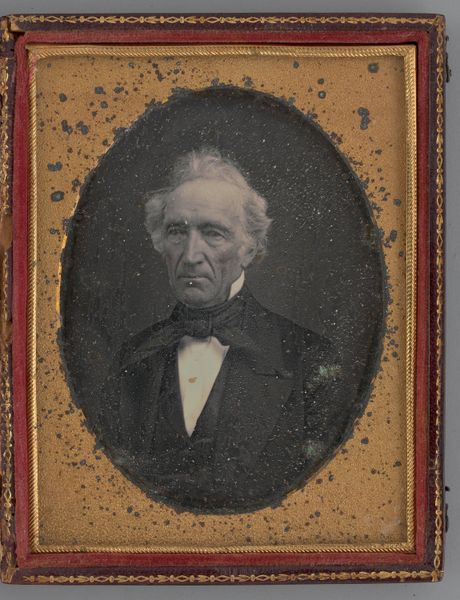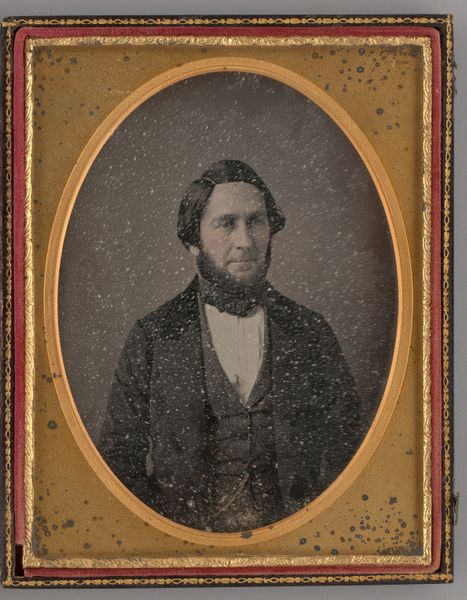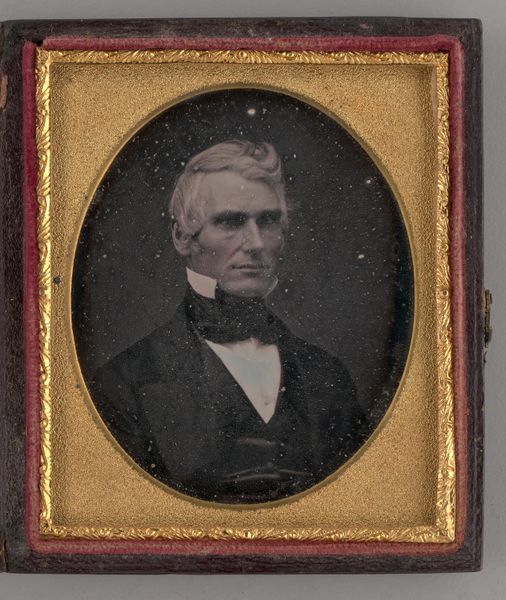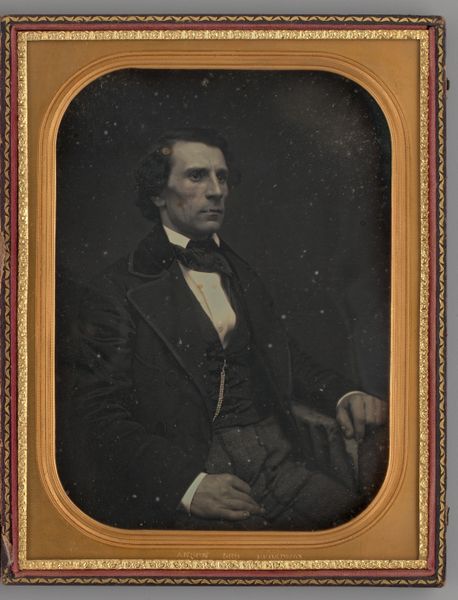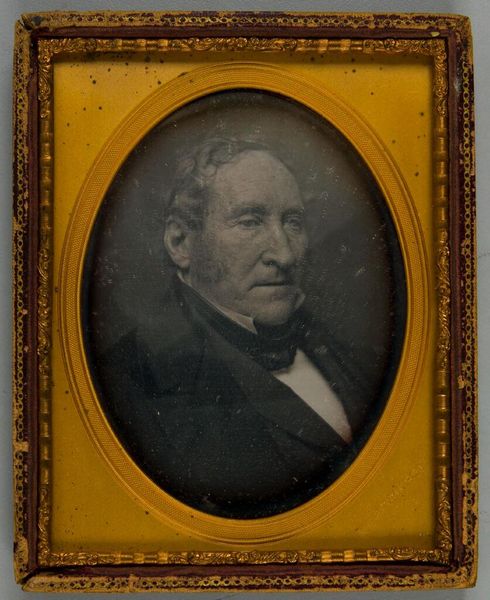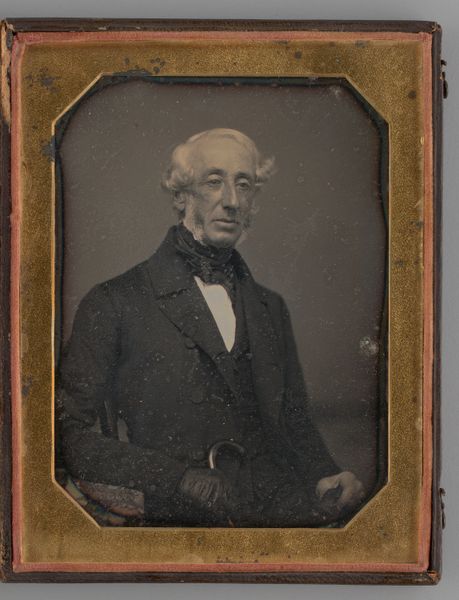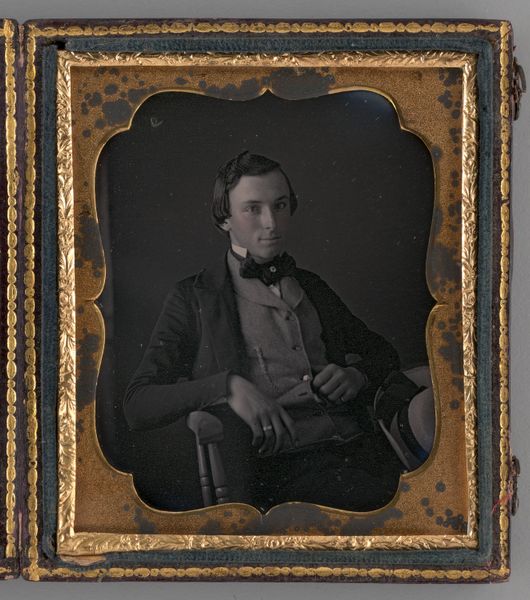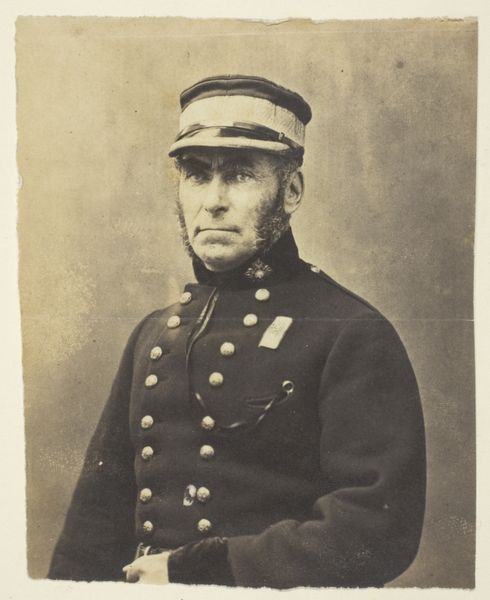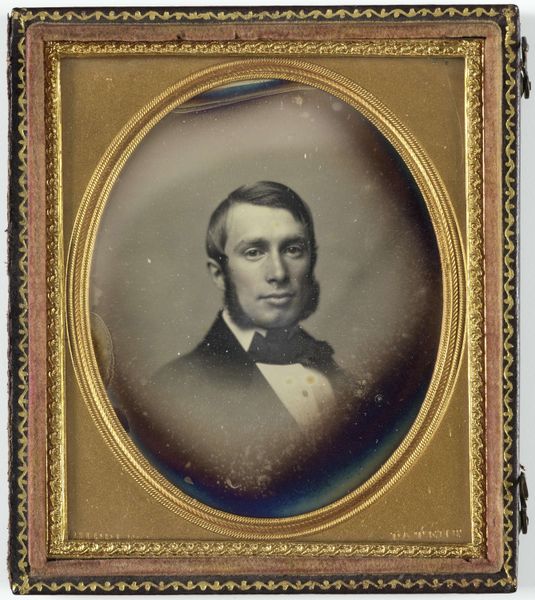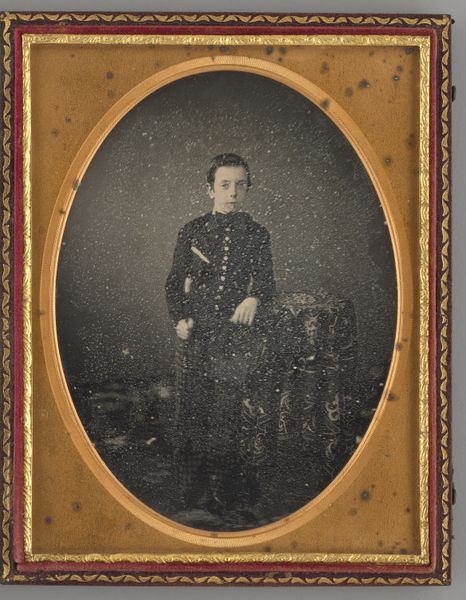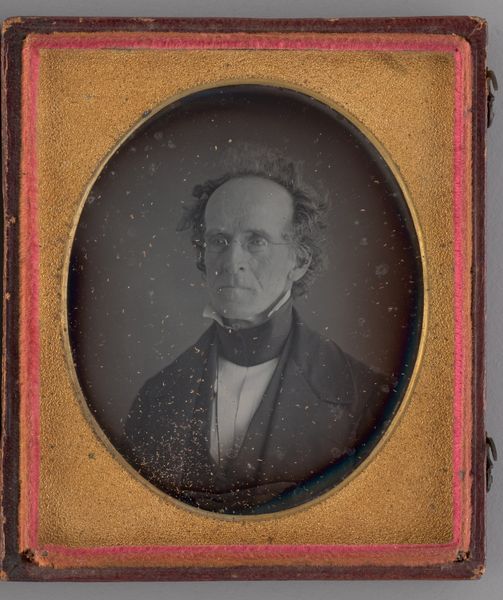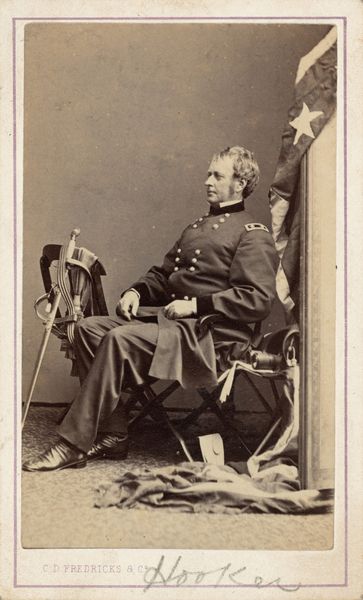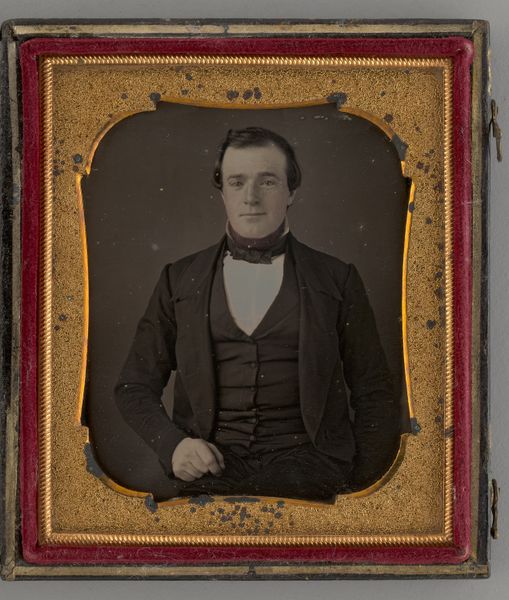
daguerreotype, photography
#
portrait
#
16_19th-century
#
sculpture
#
daguerreotype
#
photography
#
history-painting
#
realism
Dimensions: 14 × 11 cm (5 1/2 × 4 1/4 in., plate); 15.2 × 24.1 × 1.2 cm (open case); 15.2 × 12.1 × 2 cm (case)
Copyright: Public Domain
This portrait of Zachary Taylor, the 12th President, is a daguerreotype made by Alexander Beckers. The image is created on a silver-plated copper sheet, treated with chemicals, exposed to light in a camera, and then developed to reveal the image. The daguerreotype process, though pioneering, required skill and precision. Note how the metallic surface gives the image a mirror-like quality, and the image's clarity captures Taylor's likeness in great detail. Daguerreotypes were unique and could not be readily reproduced, making them precious objects. Consider the socio-economic implications of this early photographic technology. While painting portraits were reserved for the wealthy, the daguerreotype democratized image-making, allowing a wider range of people to have their likeness captured. The production of daguerreotypes became a profession, supporting photographers like Beckers. Looking closely at the material and the process reveals the cultural significance of this work, challenging the traditional hierarchy between fine art and craft, and illustrating how new technologies influence artmaking and social practices.
Comments
No comments
Be the first to comment and join the conversation on the ultimate creative platform.
